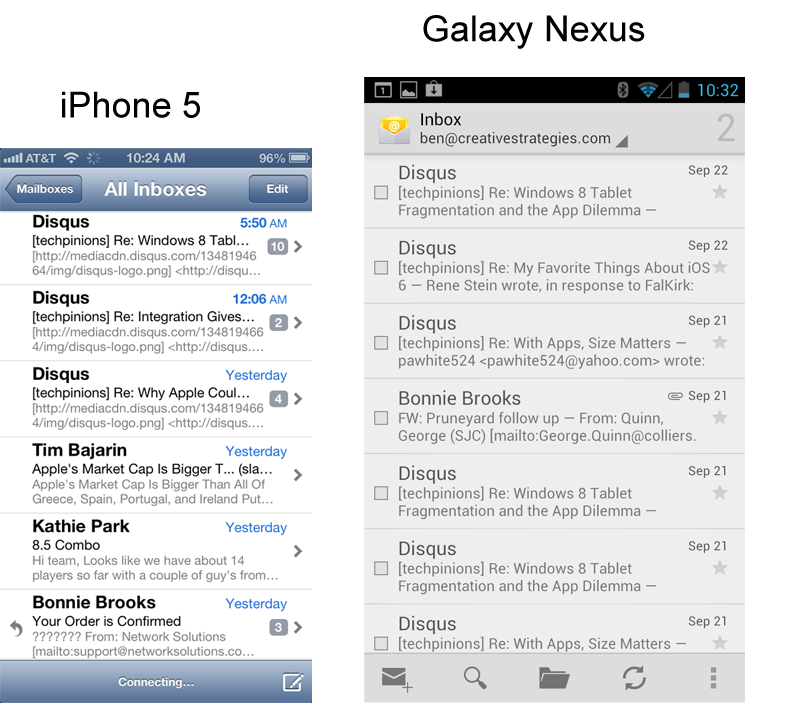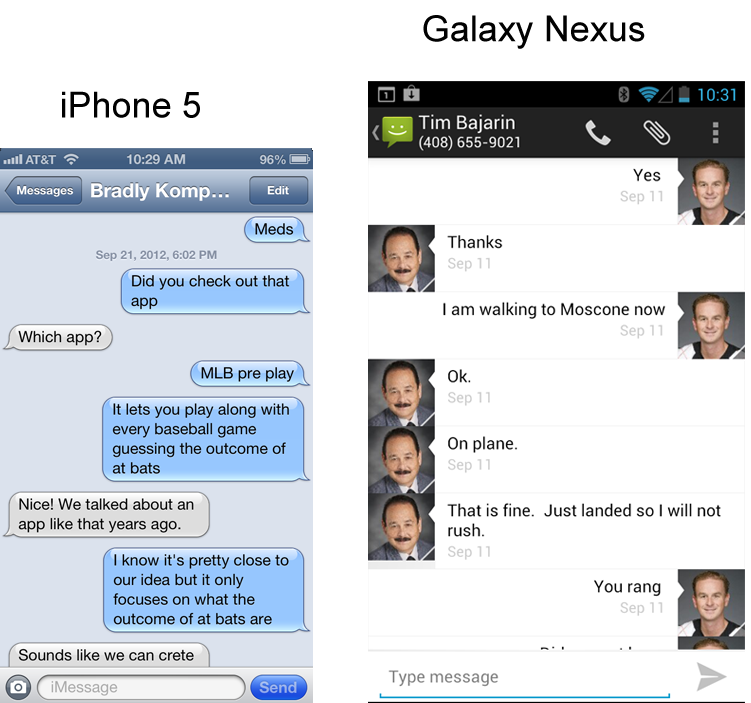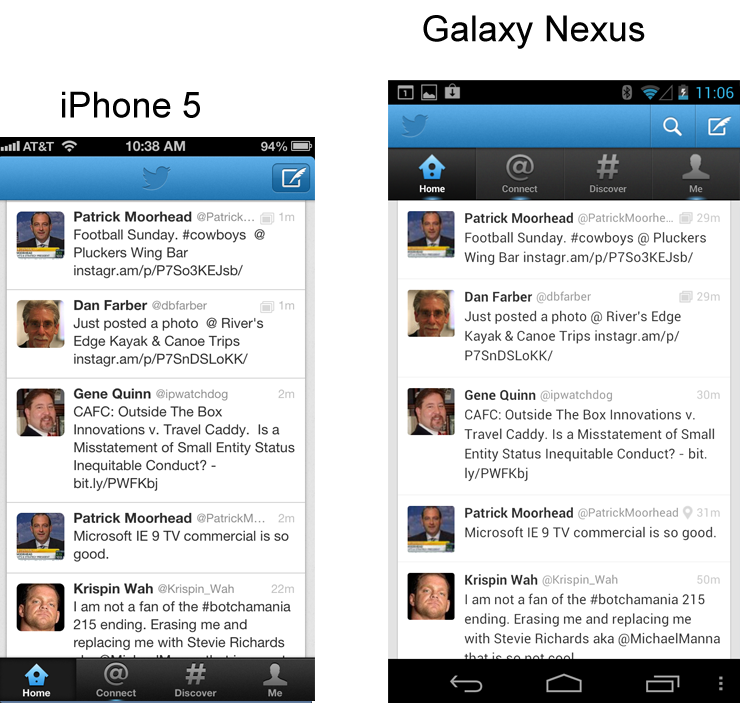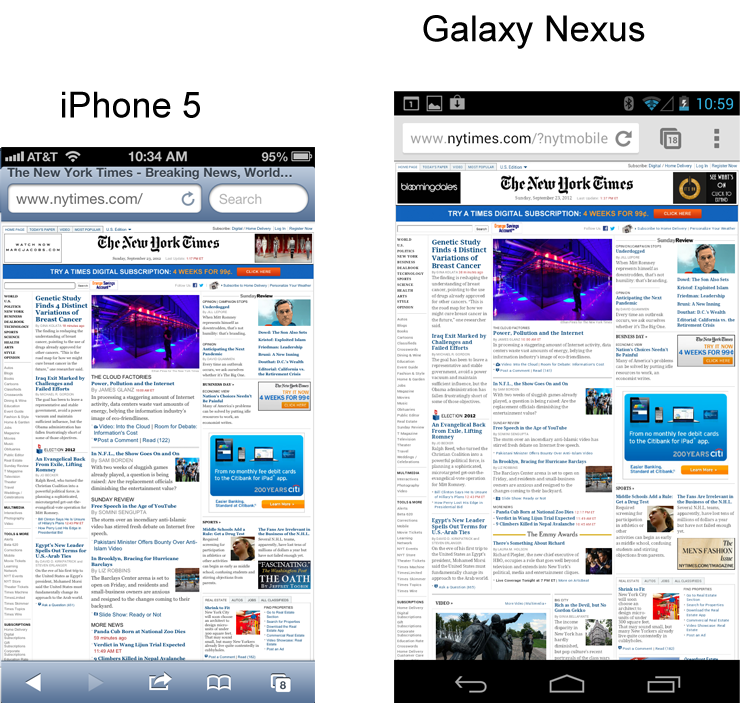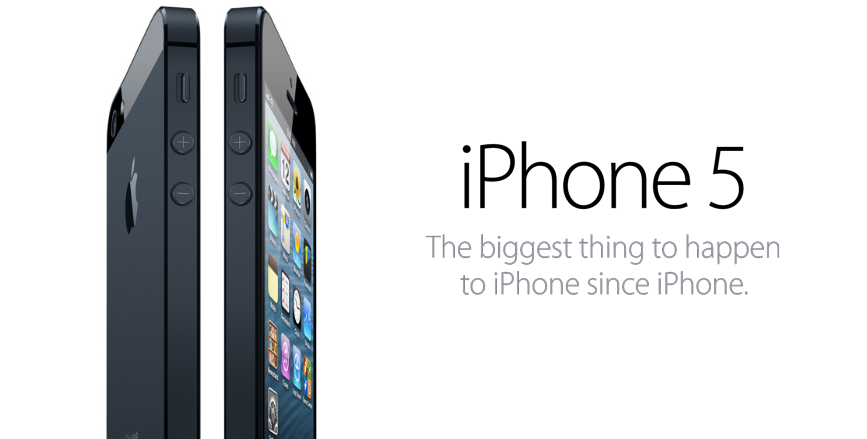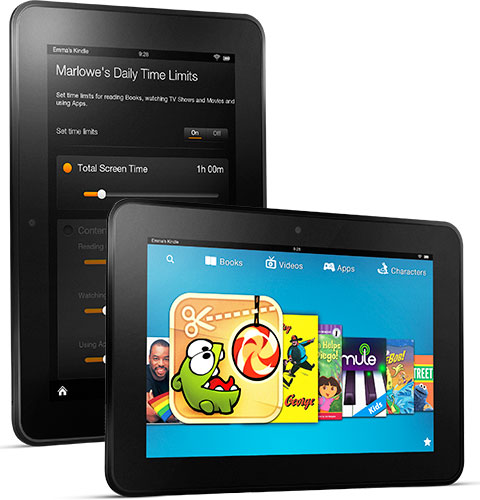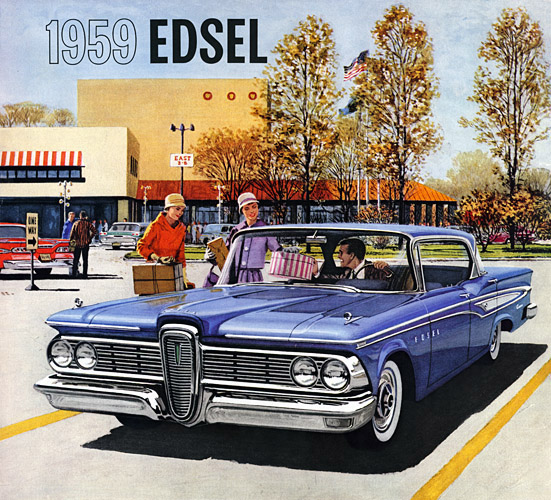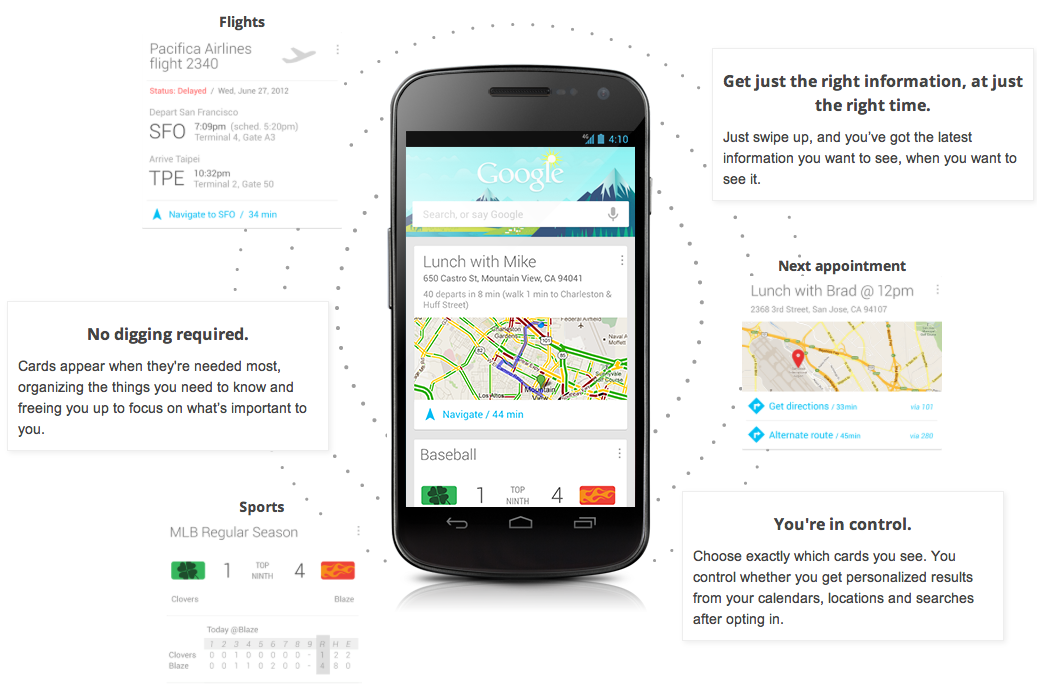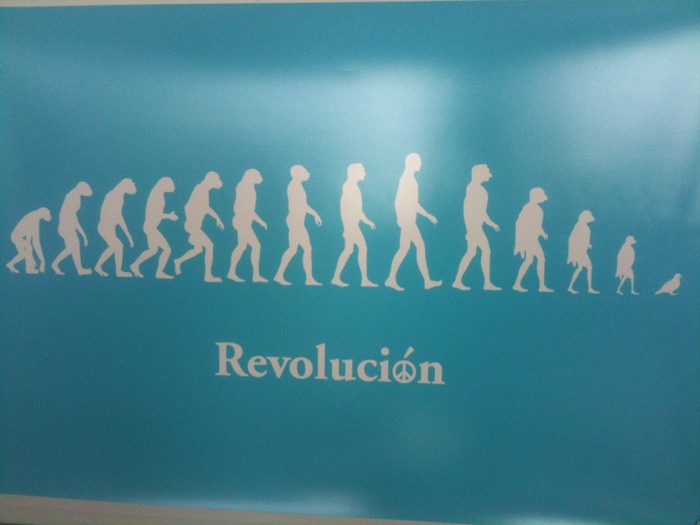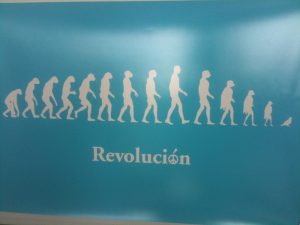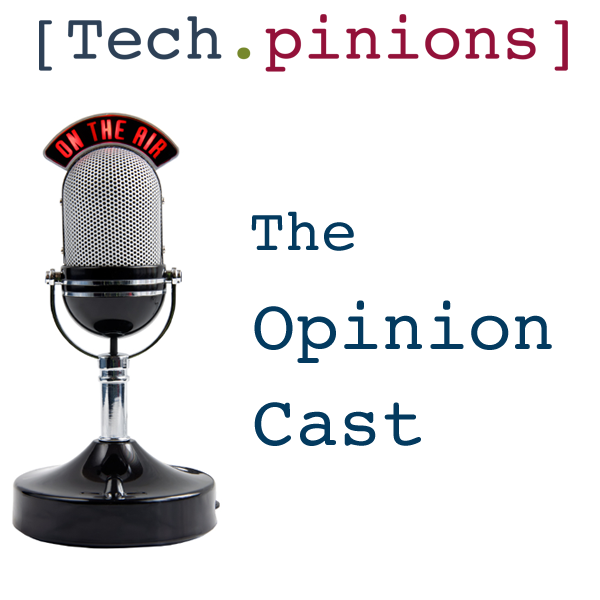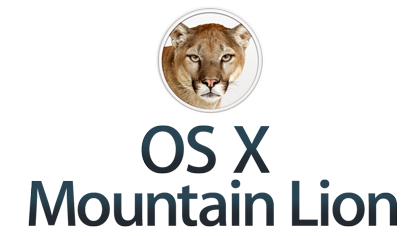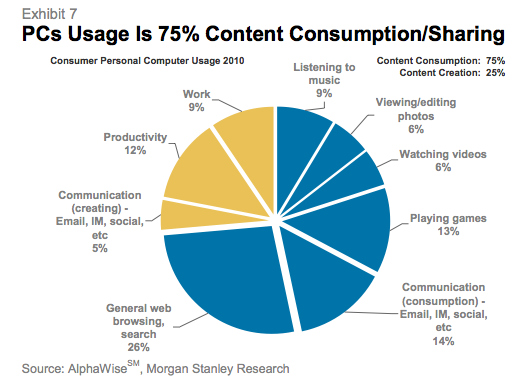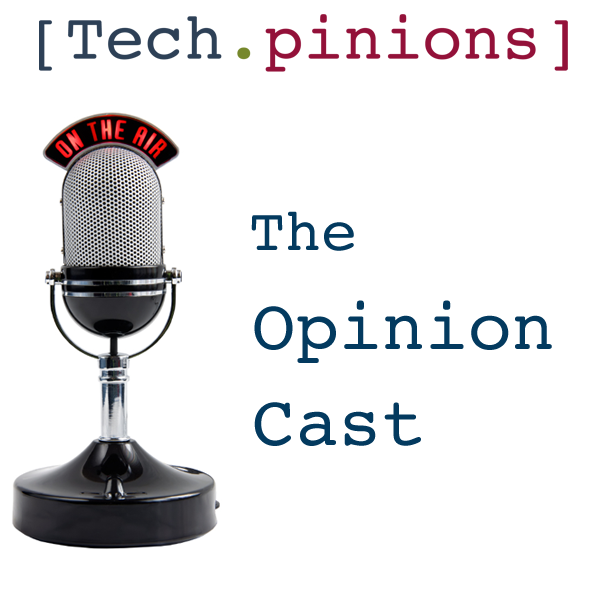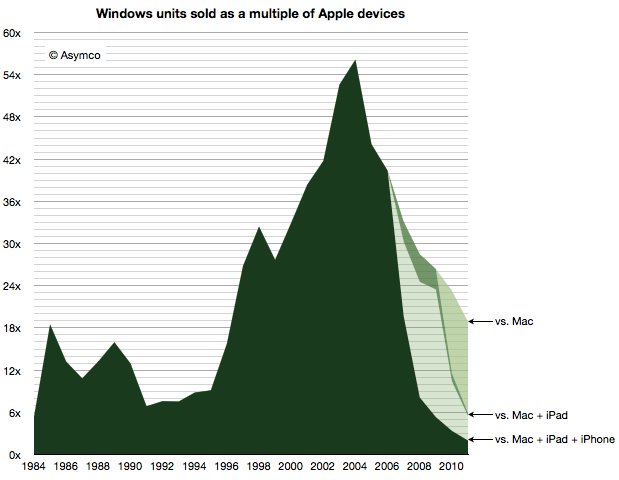 Since June I have been using the Galaxy Nexus 4.65 inch screen smart phone. Upon switching to that device from the iPhone 4S, I was instantly taken by the screen size. It was clear that gaining just over an inch or so in display size yielded a compelling experience. In fact, the screen size was one of the primary reasons I was able to withstand not going back to the iPhone 4S despite the things that frustrated me about Android.
Since June I have been using the Galaxy Nexus 4.65 inch screen smart phone. Upon switching to that device from the iPhone 4S, I was instantly taken by the screen size. It was clear that gaining just over an inch or so in display size yielded a compelling experience. In fact, the screen size was one of the primary reasons I was able to withstand not going back to the iPhone 4S despite the things that frustrated me about Android.
Bigger screen size is one of the features we hear constantly touted by Android handset makers as a core feature. By reading many of the comments from the Android enthusiast community it is clear that larger screens are something they clearly value. It is also clear that Android OEMs believe that having bigger screens is a clear differentiator over the iPhone. Coming off my experience with the larger screen size Galaxy Nexus I can understand why at the surface this seems to be true. This is why I was pleased that Apple made the iPhone 5 with a larger screen. One of the criticisms about the iPhone 5 I have heard was that the screen was still too small at 4-inches. It was clear from listening to the presentation at the iPhone launch event that Apple is convinced that from a design perspective 4-inches is the ideal screen size for clean one handed operation. So the question I want to tackle is whether there is clearly more value to be had in smart phones with screens larger than 4-inches. In essence, is bigger better?
The initial assumption is that the larger the screen the more information I can see at one time. If this was not true, then I would have to question value that would be derived from the larger screen smart phones outside of perhaps games and videos, especially given the design and hardware tradeoffs necessary to make a larger screen as well as the compromise in efficient one handed operation.
To test this I looked at key applications on both the iPhone 5 and the Galaxy Nexus to see if applications like email, text messages, viewing web pages, Twitter, Facebook, etc., were that much better on a 4.6″ screen. In all the scenarios I wanted to look at, I compared both devices with key applications and looked at how the information was displayed.
For many email is still a critical application. Email support for Microsoft’s Exchange was one of my more frustrating experiences overall with Android. Email is critical to me in my workflow and I have always liked how Apple handled Exchange server and I prefer the UI of Mail as well to many other mobile email applications.
As you can see from the below screen shot both the 4″ screen on the iPhone 5 and the 4.6″ screen of the Galaxy Nexus displayed roughly the same amount of information.
On Android the app lets me see about 6.5 messages and the iPhone shows me 6 full messages, which is one full message more than the iPhone 4S. My conclusion is that the 4.6″ Galaxy Nexus provided no significant value with respect to email over Apple’s 4″ screen on the iPhone 5.
Text Messages
Not everyone may consider email as critical as an everyday application as myself or other professionals but text messaging is a different story. Text messaging may be one of the most important applications on any smart phone and I was curious to see if the larger screen provided any significant value when it came to text messaging.
As you can see from the text message thread below, the iPhone 5 actually shows more messages as a part of each thread than Android. A key thing to note is that on the iPhone 5 I have a thread that is often more than one line per message, where as on Android there are more one line messages. When I looked at text message threads on the iPhone 5 that were more one line messages, I could see almost double the amount of messages on the screen than on Android.
Conclusion: iPhone 5 with its 4″ screen does a better job displaying text messages than the 4.6″ Android Galaxy Nexus.
Facebook is another key application that many consumers use regularly on their mobile devices. Both of the screen shots below were taken using the mobile application created by Facebook for each platform.
As you can see both devices show roughly the same information with the iPhone 5 showing just a bit more of the timeline but not enough to consider it useful. My conclusion was the Facebook experience was generally similar with no significant value being derived with Facebook on the larger 4.6″ Galaxy Nexus.
Not everyone uses Twitter. I do regularly and it is an important application in my every day smart phone use. The comparison screen shots below are Twitter’s official application on both iOS and Android.
Here again we find very similar experiences between both devices with no real value being derived from the larger 4.6″ screen.
Web Browsing
Web browsing is another key application to a smart phone experience. Many sites are deploying mobile versions of their sites but to do this test I wanted to see if the larger 4.6″ screen on the Galaxy Nexus let me see more of a full web page than the iPhone 5’s 4″ screen.
So I went to the full version of the NY Times to see how the experience compared on both devices.
As you can see here again, both devices display about the same amount of information regardless of their screen size differences. Interestingly, however, even though the iPhone 5’s screen is smaller than the Galaxy Nexus, when viewing the full version of the NY Times on both sites, I still found the iPhone 5’s screen easier to read the text and key elements of the page. Thus, the full web experience was actually better on the iPhone 5’s 4″ screen than the Galaxy Nexus 4.6″ screen.
Key Conclusions
What I am pointing out in this analysis is in the same vein as the issue I brought up in my column last Friday, which was that customized apps, tuned to a screen size, are going to out-perform in terms of experience and value than apps that are simply scaled to match whatever screen size gets thrown on the market. Scaling an application just increases its size relatively but as I show above does not lead to more information and debatably a better experience.
The one area where this may make a difference is with games and videos where a slightly larger screen may be pleasant. But those use cases are just one part of the overall device usage.
We are already seeing the vast majority of iOS developers beginning to tune their apps just for the 4″ screen. This is not something we can say with Android development. It would be difficult to create custom applications for all of Android screen sizes in order to utilize the value of each screen size–if even possible at all. This is why Android is based on an app scaling philosophy.
I am watching closely how iOS developers take advantage of the larger screen to see if the custom apps built for 4″ screens actually provide more value in terms of experience and value than scaled apps on Android to fit every screen size.
Ultimately consumers will have to choose which tradeoffs they feel are most valuable as they evaluate what matters most to them in a smart phone experience. What performing this analysis proved to me was that I found no real significant value in terms of experience or information display with even the largest Android smart phones.
In conclusion, bigger does not necessarily mean better.

